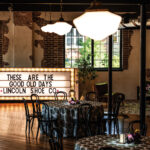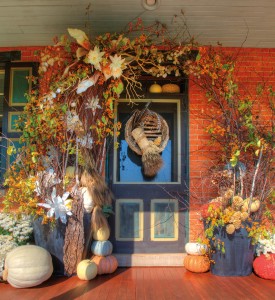This month’s issue includes a feature on Columbia I wrote called “Mysteries of the River Town.” Even at 10 pages, there still wasn’t enough room for me to include all the amazing things I discovered there.
To me, the most fascinating thing about Columbia is its wealth of history, from pre-Revolutionary War to the Civil War to Prohibition. John Wanamaker, Al Capone and Thomas Edison all did business in Columbia at one time or another. Columbia also has a rich African American heritage, including being vital to the development of the Underground Railroad. I grew up in Lancaster County and didn’t know most of this stuff!
Turns out there’s a lot more to Columbia than you might expect:
Mason-Dixon Line
Early Columbia was known as Wright’s Ferry, after founder John Wright’s passageway across the Susquehanna River. His ferry also was coveted by Maryland, which had long disputed Pennsylvania over the states’ dividing line. In 1730, a man named Thomas Cresap – soon called “the Maryland Monster” – forcibly established a colony where Wright’s passengers would disembark (now Long Level). Years of legal battles and militia skirmishes followed, which became known as “Cresap’s War.” In 1738, King George II intervened with a territorial agreement that ultimately led to the creation of the Mason-Dixon Line.
Susanna Wright
John Wright’s daughter, Susanna, was a pillar of the early Columbia community, skilled in everything from poetry to law to medicine and one of the most successful silk producers in Colonial America. She also served as hostess and counselor for Benjamin Franklin, while also drafting legal documents for less-literate neighbors and advocating for Native Americans.
Capital City
The Susquehanna River and its proximity to major trade routes made Columbia so important to early commerce that the Founding Fathers nearly crowned it the nation’s capital. It lost by only one vote. Columbia was considered for the capital of Pennsylvania, too, but Harrisburg won out because it was closer to the geographic center of the state.
Underground Railroad
The river, its location near Maryland and its early Quaker population combined to make Columbia a haven for escaped slaves. The town’s abolitionist sympathies coalesced in the early 19th century, when John Wright’s grandson, William, began setting up a network of safe houses at regular intervals from Columbia to Philadelphia.
William Whipper & Stephen Smith
A millionaire in the early 19th century surely was a rarity, but two of them in the same town – and they were African American? It’s true! Whipper and Smith co-owned a Columbia-based lumber business that stretched across the northeast, and also included railroad cars and a steamship on Lake Erie – which, combined with their wealth, proved very helpful in assisting escaped slaves.
Edgar Allen Poe
The Columbia Spy was the town’s weekly newspaper for the first half of the 19th century. In 1844, the paper printed a series by Poe called “Doings of Gotham” – part-travelogue, part-gossip musings on New York that provide a rare, vivid portrait of the city’s gritty early days. It also shows off Poe’s taste for the macabre as well as any of his fiction: “The old mansions…are suffered to remain unrepaired, and present a melancholy spectacle of decreptitude. In fact, these magnificent places are doomed.” (Letter I, May 18, 1844)
Prohibition
In 1932, the Columbia Brewery was making suds on the sly when it was raided by state police, who pumped 200,000 gallons’ worth into the town’s storm-water system. So much beer poured out in such a short time that the streets buckled – and if police thought people wouldn’t take advantage of the free-flowing booze, they were wrong. According to Columbia Historic Preservation Society Director Chris Vera, “even dogs were drunk.”








 Barry, who deems the project the “most exciting thing I’ve ever been a part of,” is a frequent visitor to the trail in both a biking and dog-walking capacity. “I talk to random people to get their reactions,” he explains. As a result, he’s talked to “people from all over the country and we’re getting rave reviews. A couple I met from Boston have walked similar trails all over the country and decided to check out ours when they were here for a wedding. They put it in the Top 5!”
Barry, who deems the project the “most exciting thing I’ve ever been a part of,” is a frequent visitor to the trail in both a biking and dog-walking capacity. “I talk to random people to get their reactions,” he explains. As a result, he’s talked to “people from all over the country and we’re getting rave reviews. A couple I met from Boston have walked similar trails all over the country and decided to check out ours when they were here for a wedding. They put it in the Top 5!”
 State grants and a $1.25 million contribution from Norfolk Southern enabled the township to develop the trail, which will eventually join with a nearly 24-mile route that will traverse other jurisdictions in the Southern End, culminating in the Christiana area. The funds have helped the township “pave” the trail with a unique surface that is composed of clay and finely crushed rock. Barry says the mix, made by
State grants and a $1.25 million contribution from Norfolk Southern enabled the township to develop the trail, which will eventually join with a nearly 24-mile route that will traverse other jurisdictions in the Southern End, culminating in the Christiana area. The funds have helped the township “pave” the trail with a unique surface that is composed of clay and finely crushed rock. Barry says the mix, made by 















